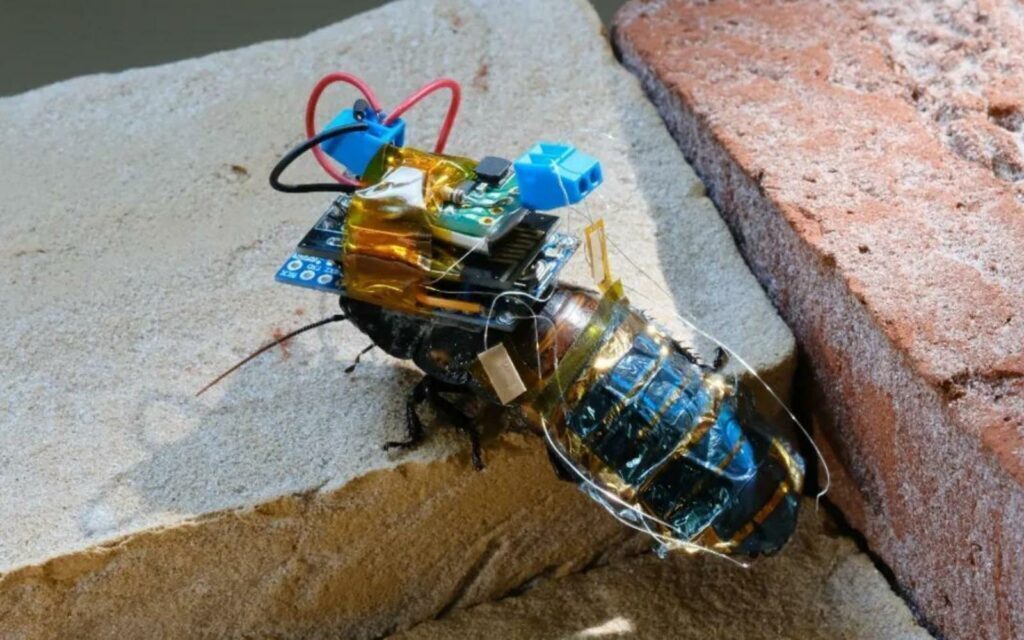Maybe humanity is a little too hung up on AI taking over the world. Yes, it’s an issue – but one for the future. Humanity needs to survive the uprising of cyber cockroaches and no, we didn’t make that term up. We did make up the part about them taking over the world though. We can’t say for sure that they won’t, but we can make a pretty good guess.
Scientists have too far this time around, creating cyborg cockroaches that are powered by the sun. Why? Science hopes to use its newfound army for search and rescue missions and monitoring the environment.
“I want her to know it was me”
In a paper published yesterday, scientists showed off their engineering prowess by revealing a system that enables the remote control of a cockroach’s legs. If you’re reminded about Pickle Rick (funniest thing we ever saw), then you’re not alone.
The system is essentially put right into the cockroach’s nervous system. Madagascar hissing cockroaches are the unfortunate test subjects of this technology. The roaches wear a backpack that charges via solar energy. An operator can press a button that sends a shock through the creature’s nervous system, forcing it into a direction of the drivers choosing.
It does this by connecting the backpack system to a roach’s ‘cerci’, two sensory nerves attached to the end of the abdomen. One is along the roach’s left and one is on the right. Send a shock down the right, and it’ll turn right. The same goes for the left. It’s getting the shocks to the cockroach that is more of a problem.

The shock-delivering backpack requires a source of power. Plain batteries are out of the question. If it dies, the roach is free to wander about as it wishes. Good luck getting that backpack back. The best solution is solar power, which keeps the battery charging on the go. After considerable trial and error, the scientists connected the battery and stimulation module to the creature’s thorax. The solar module needed to be on the roach’s abdomen, which proved a challenge.
Read More: Science turns dead spiders into “necrobotic grippers”
The main issue scientists faced was keeping the roach from simply flipping over and messing up all the systems. They couldn’t just throw some flex tape on and call it a day. It would hinder the roach’s movement too much. The team tested a number of extremely thin electric films, noting how each affected the speed and mobility of the roach. Eventually, the team landed on a piece of film seventeen times thinner than a human hair. This keeps the roach light enough to move around without slowing down the directed turns.
When we’ll be seeing these cyborg cockroaches on actual missions remains to be seen. So far, this is all the team has managed. Sending out a remote-controlled roach to search for trapped people would require cameras too. Those use up more power, are harder to strap to the creature, and would feature very low image quality. It’s doable, but it wouldn’t be elegant. The team is working on it, but it could be a while before we see cyborg roaches used practically.
Source: CNET




